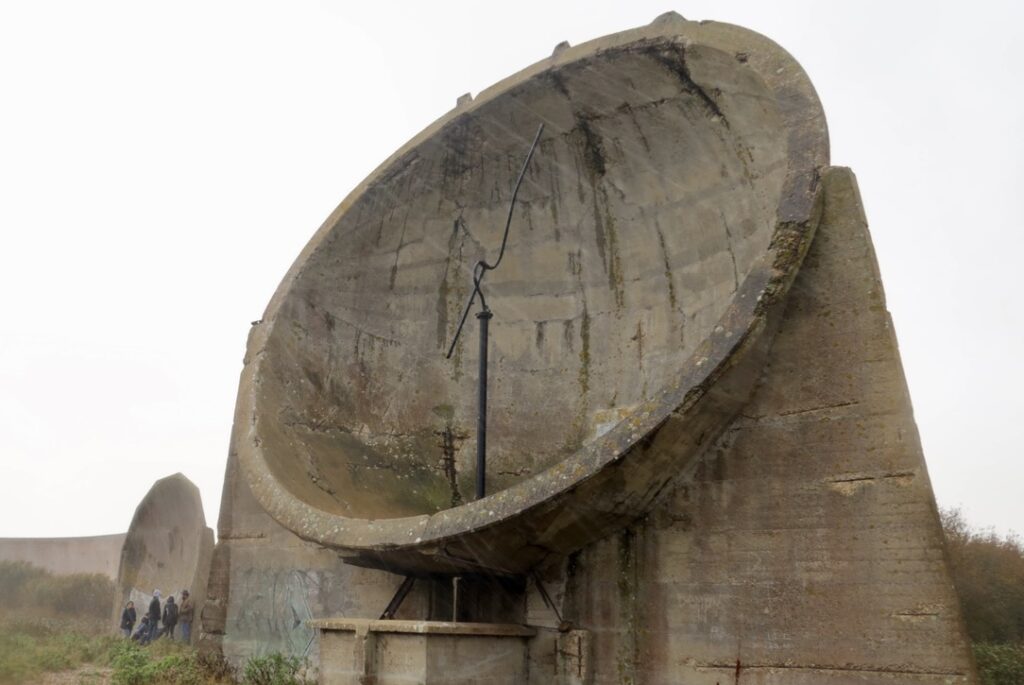Our managing director Mark Scutchings visits an early warning system on Kent’s Romney Marsh.
Naturally enough, audiologists are interested in anything to do with sound. A few months ago, I found out about a bit of sound history on our doorstep.
The sound mirrors in Greatstone are the remnants of an early warning system designed to detect aircraft in the English Channel.
National defence strategy

Preservation work has recently been completed following a grant from English Heritage of half-a-million pounds.
The sound mirrors were built between 1927-30 and formed part of Britain’s national defence strategy.
In a time before radar, they were designed to pick up the sound of approaching enemy aircraft and gave a 15-minute warning of enemy attack. They worked by collecting sound and focusing it on a microphone. A listener would monitor the output with a stethoscope.
Star of the show
Although there are the remains of sound mirrors in other parts of the country, the mirrors at Greatstone form a unique collection as they represent the three distinctive designs all in one place.
The star of the show is the 200-foot-long strip-mirror. There are only two of these in the world, the other one is in Malta.
Without getting too much into the physics of things, big aeroplanes made a lot of low frequency noise and these big wavelengths meant that the structures have to be large enough for the waves to bounce off. The wavelength of low frequency aircraft noise is typically about 5 metres (18 feet).
Open days
Although the sound mirrors were effective, their days were numbered. As aeroplanes travelled faster, the warning times became shorter and detection became harder as noise pollution increased. The development of radar finally put an end to the technology.
If you want to see the sound mirrors for yourself, you can look out for the open days on the RSPB website here.

